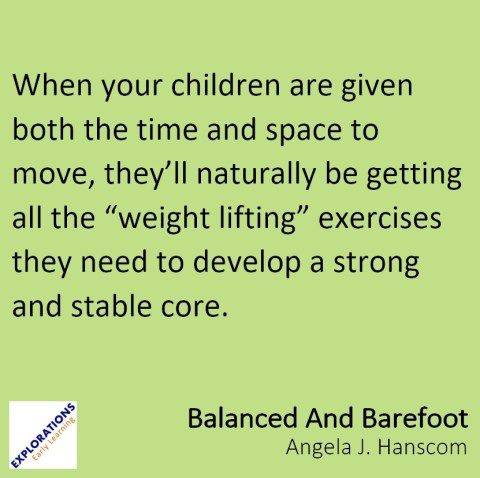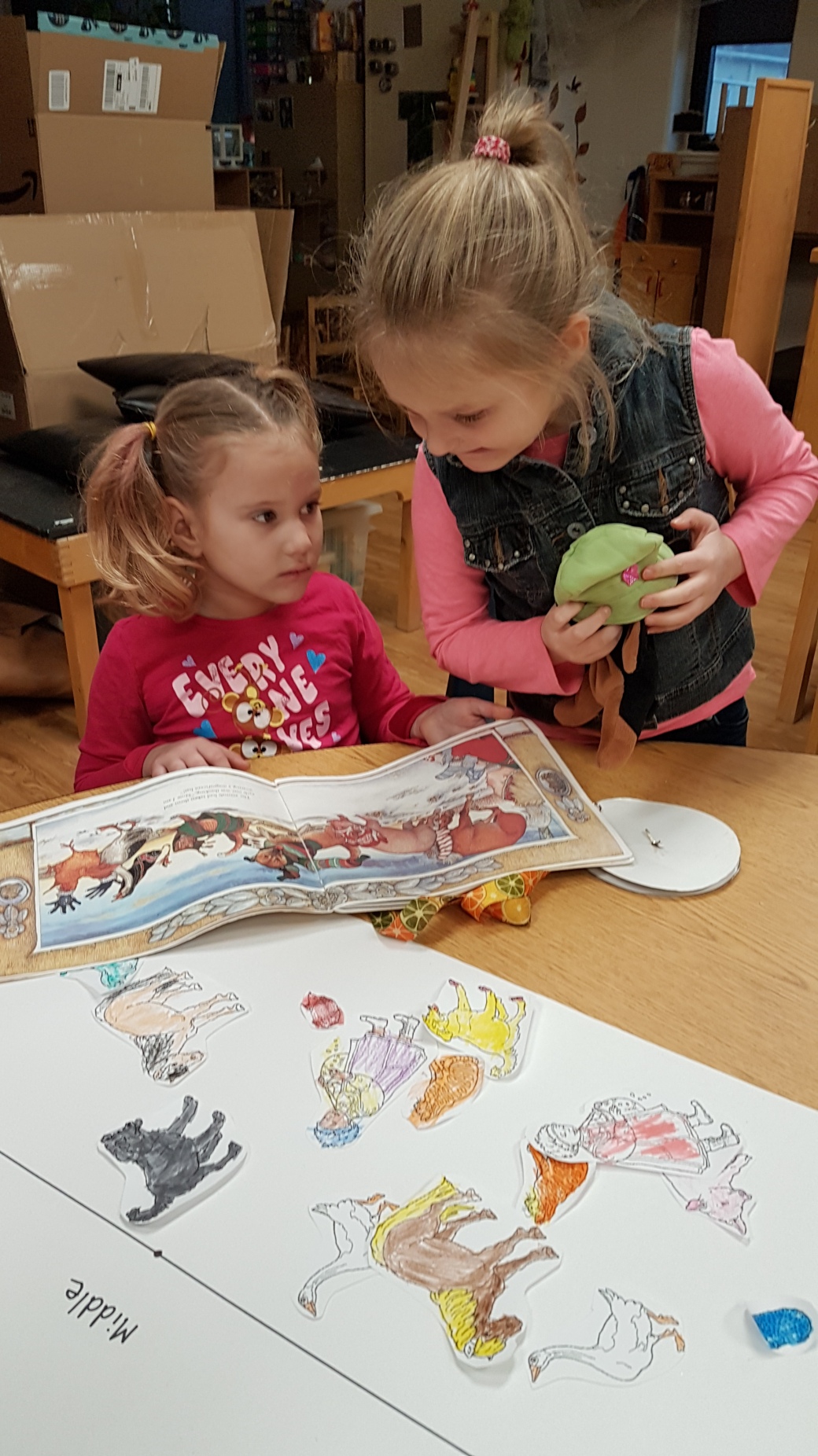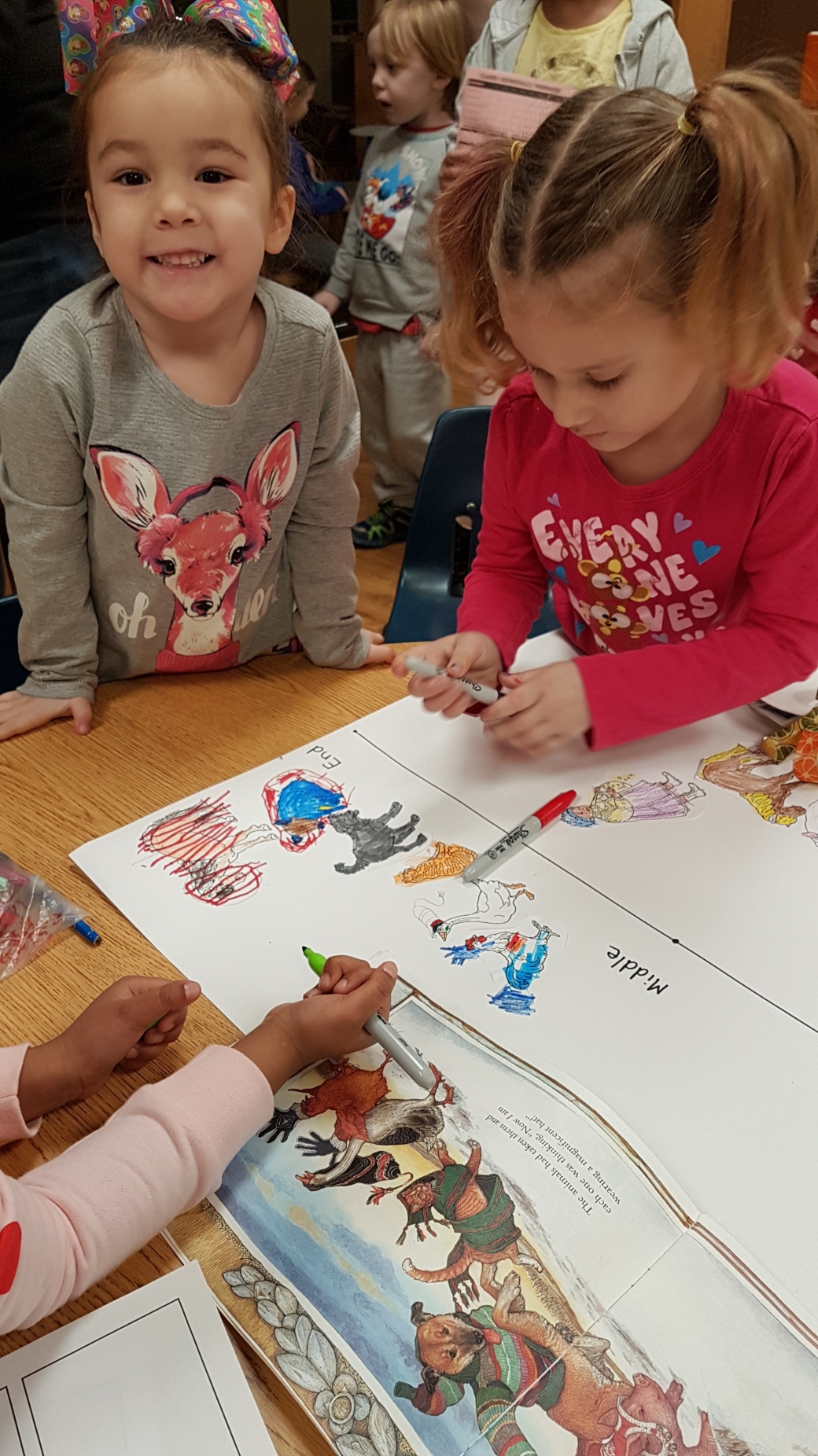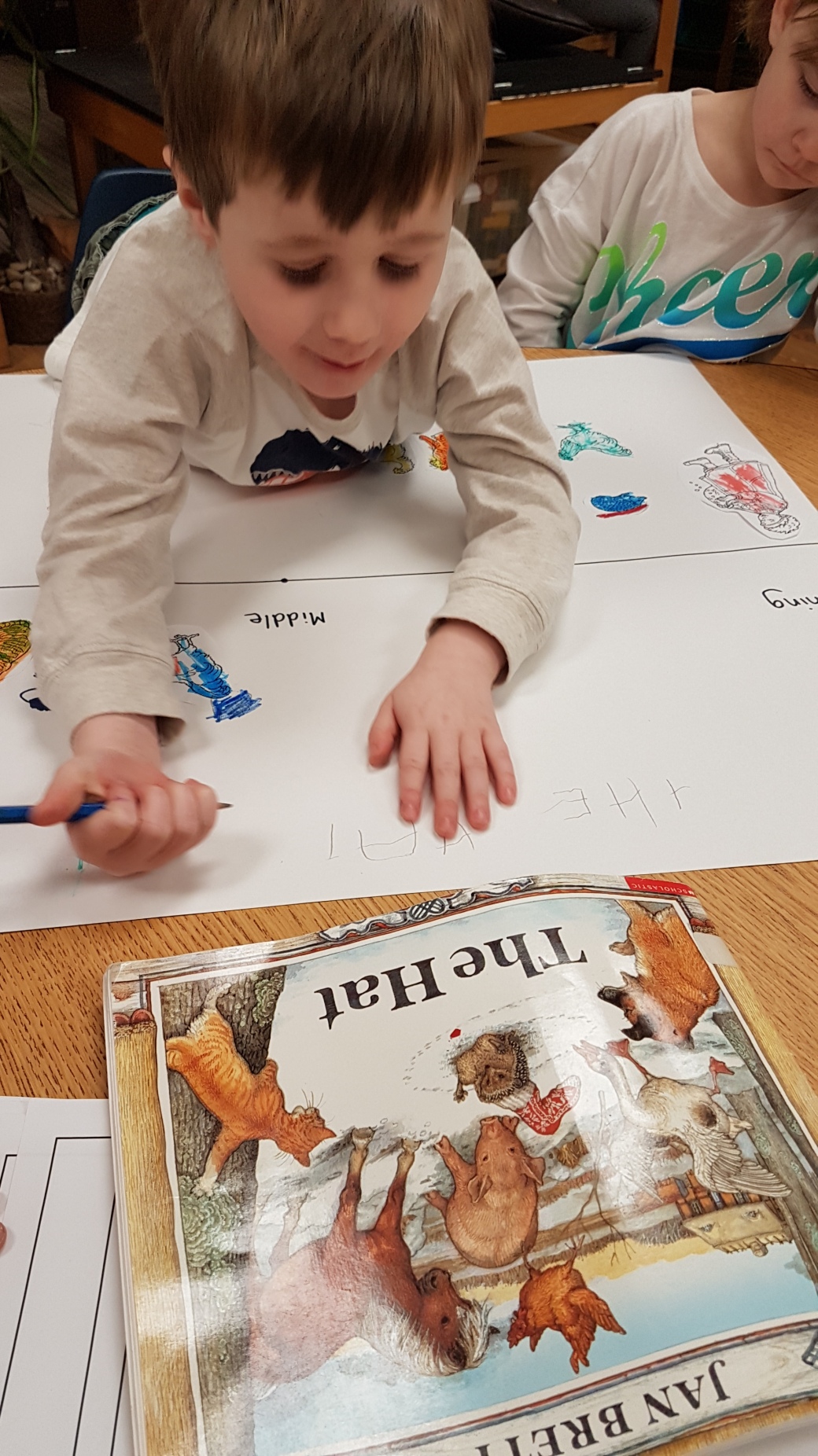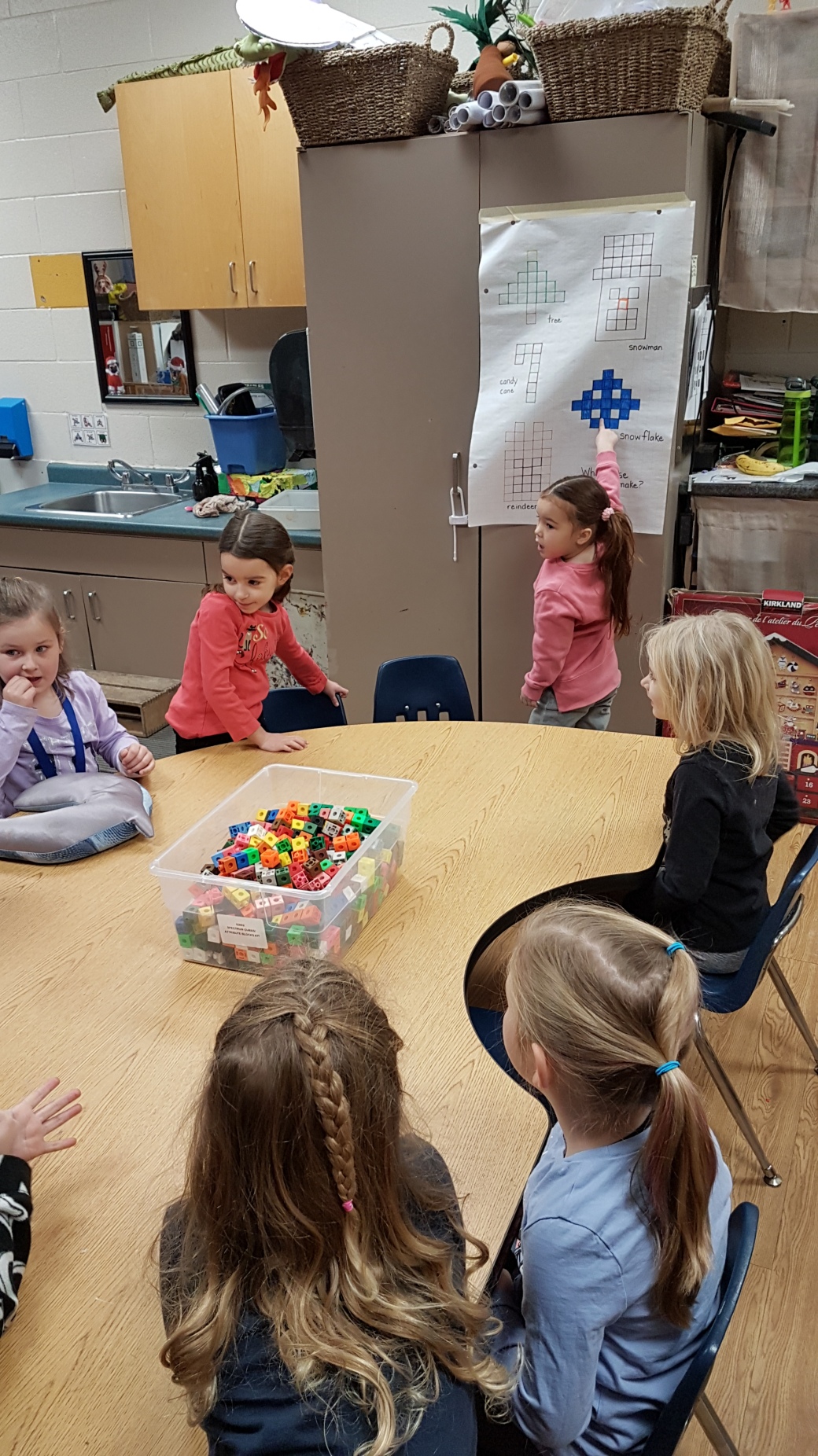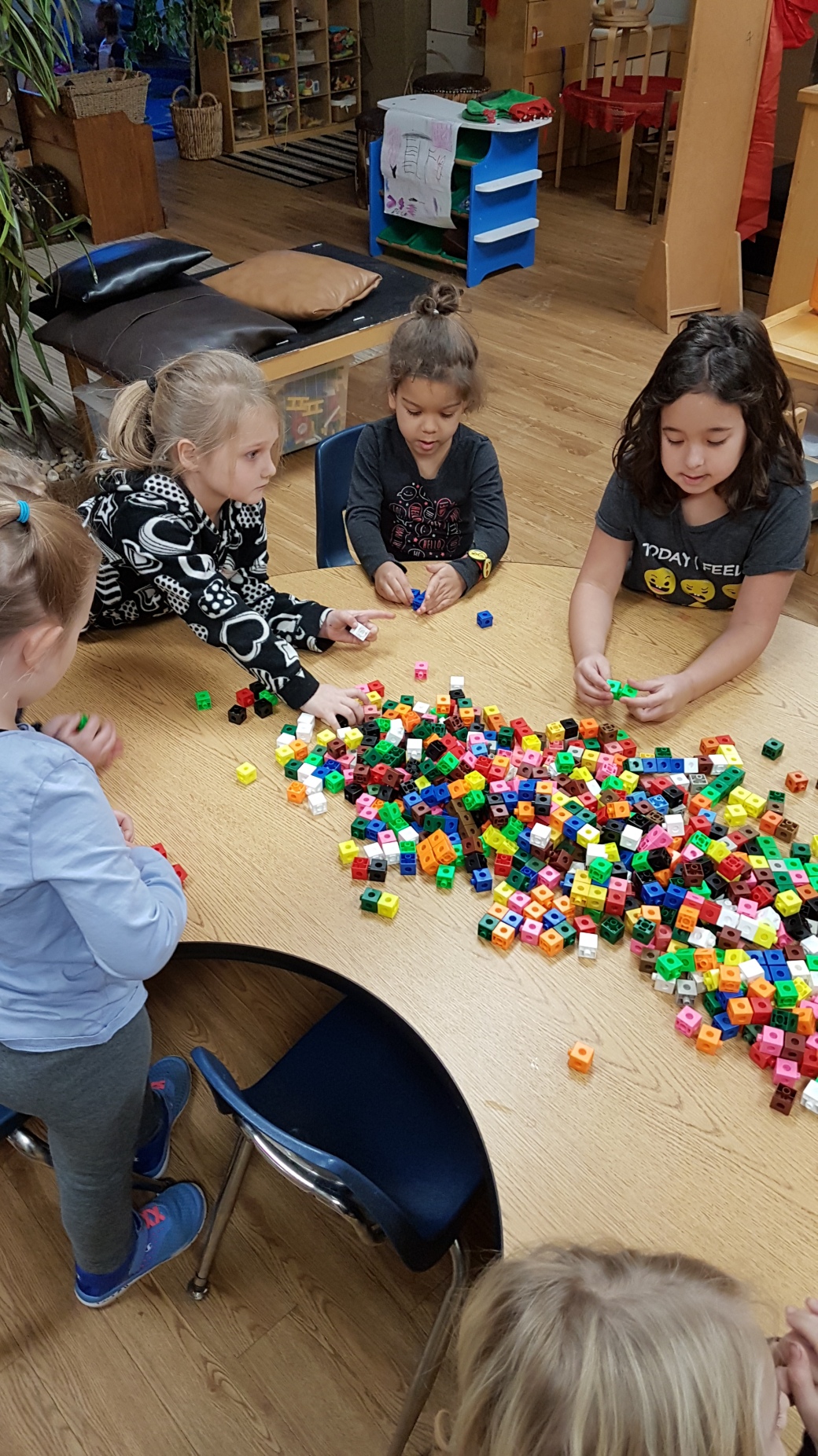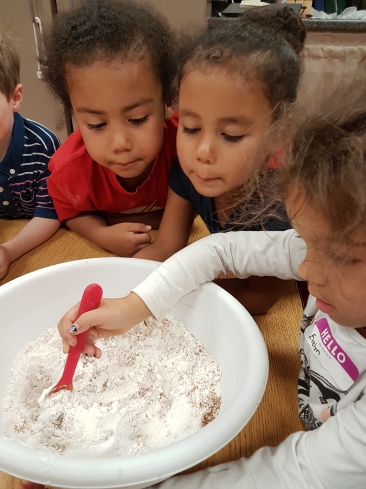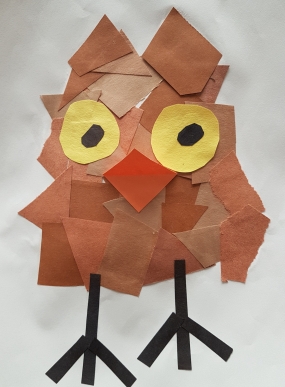When we notice our students playing certain made up games, we try to enhance that play with appropriate props and materials. Animal play is almost always popular in our room and it became very common again after Christmas. We brought out all of our Vet tools and stuffies and every student got involved in one way or another. We used this theme to touch on concepts across the curriculum: writing, letter recognition & sounds, number sense, addition, playdoh, art, etc.
Our students are more engaged in learning when an interest is tapped into, like pets and vets. What really solidifies the whole inquiry as a holistic entity is when we can make it a real life experience. We do this by going on a field trip or by bringing the real world into the classroom. As we developed our understanding of how to take care of pets and animals, we were able to interact with 2 of the teacher’s dogs, SPCA volunteers and their dog, and a local veterinarian!
Jack and Max were the perfect pet patients. Students were able to get up close to them to check their heartbeats, their ears, and have their paws wrapped up with gauze.
The SPCA and Ollie the dog were able to help answer lots of questions about how to keep pets safe and healthy.
Dr. Megan was a wealth of information and a wonderful example of a community helper. She showed us real x-rays and was able to tell us what they mean. She showed us how she performs real surgery on animals with a stuffed dog named Rusty. All of our students then received a surgical hat and helped wrap sore legs, ears, and tails. We saw samples of ticks and heart worms and gall stones.
Having real dogs and people visit our class extended our learning to a higher level than we would ever have arrived at simply by playing pet in Drama! We are thankful to have community members willing to help us develop our inquiry projects.



































































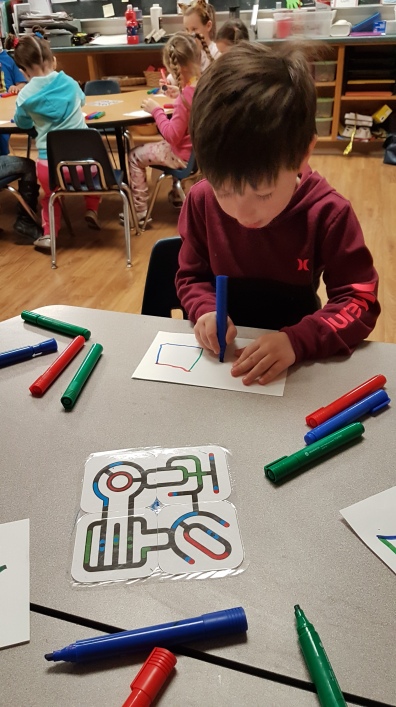 We were so lucky to have the Brantford Public Library visit us this week with their collection of Ozobots that they have available for loan. Ozobots are tiny robots that students can control through the lines that they draw on paper. It is a unique experience for students to have complete control over how a little robot moves. The way to code the robots is simple enough for kids to be able to work independently, which is a way to give them confidence in their abilities.
We were so lucky to have the Brantford Public Library visit us this week with their collection of Ozobots that they have available for loan. Ozobots are tiny robots that students can control through the lines that they draw on paper. It is a unique experience for students to have complete control over how a little robot moves. The way to code the robots is simple enough for kids to be able to work independently, which is a way to give them confidence in their abilities.







